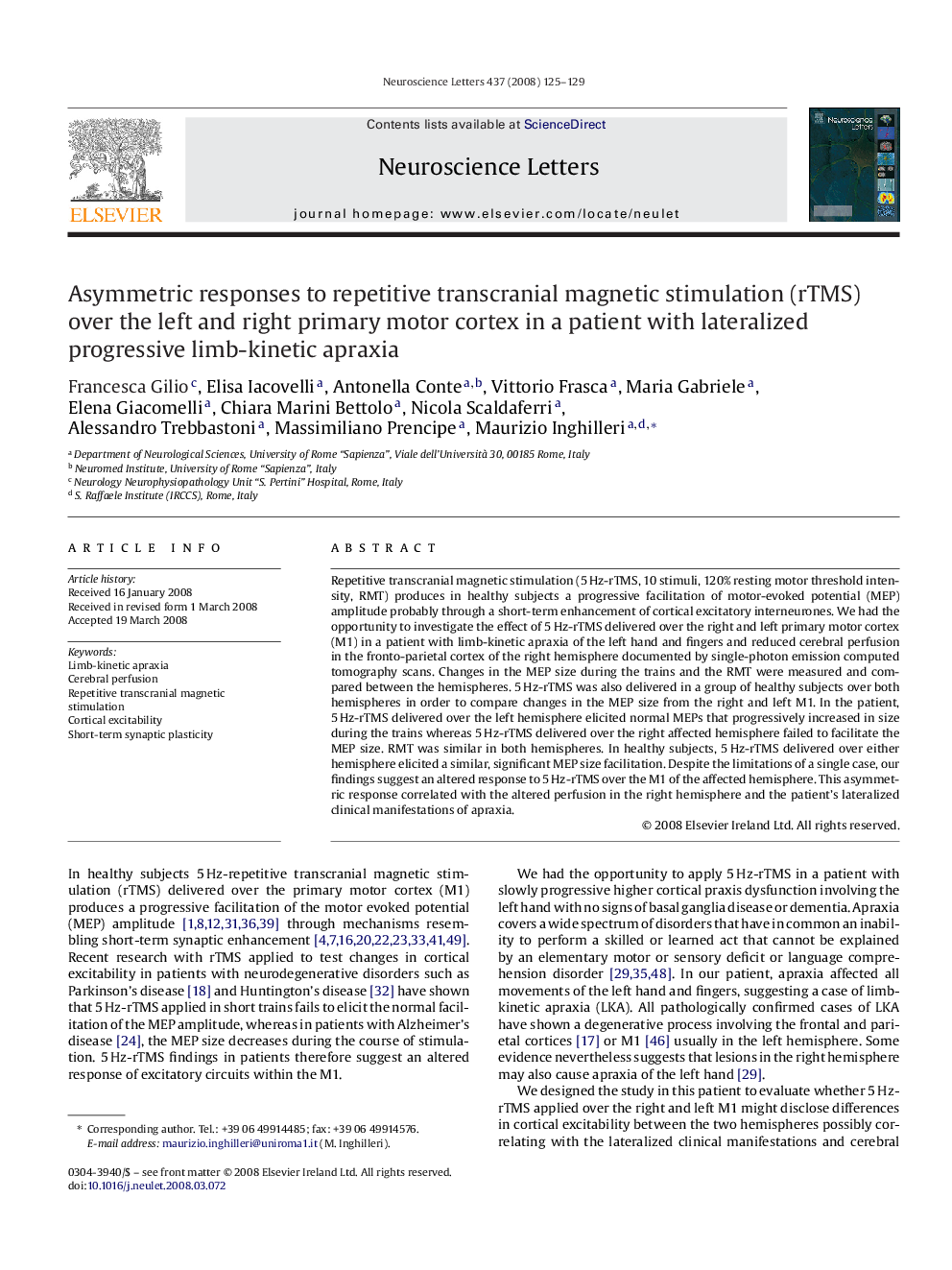| Article ID | Journal | Published Year | Pages | File Type |
|---|---|---|---|---|
| 4348213 | Neuroscience Letters | 2008 | 5 Pages |
Repetitive transcranial magnetic stimulation (5 Hz-rTMS, 10 stimuli, 120% resting motor threshold intensity, RMT) produces in healthy subjects a progressive facilitation of motor-evoked potential (MEP) amplitude probably through a short-term enhancement of cortical excitatory interneurones. We had the opportunity to investigate the effect of 5 Hz-rTMS delivered over the right and left primary motor cortex (M1) in a patient with limb-kinetic apraxia of the left hand and fingers and reduced cerebral perfusion in the fronto-parietal cortex of the right hemisphere documented by single-photon emission computed tomography scans. Changes in the MEP size during the trains and the RMT were measured and compared between the hemispheres. 5 Hz-rTMS was also delivered in a group of healthy subjects over both hemispheres in order to compare changes in the MEP size from the right and left M1. In the patient, 5 Hz-rTMS delivered over the left hemisphere elicited normal MEPs that progressively increased in size during the trains whereas 5 Hz-rTMS delivered over the right affected hemisphere failed to facilitate the MEP size. RMT was similar in both hemispheres. In healthy subjects, 5 Hz-rTMS delivered over either hemisphere elicited a similar, significant MEP size facilitation. Despite the limitations of a single case, our findings suggest an altered response to 5 Hz-rTMS over the M1 of the affected hemisphere. This asymmetric response correlated with the altered perfusion in the right hemisphere and the patient's lateralized clinical manifestations of apraxia.
